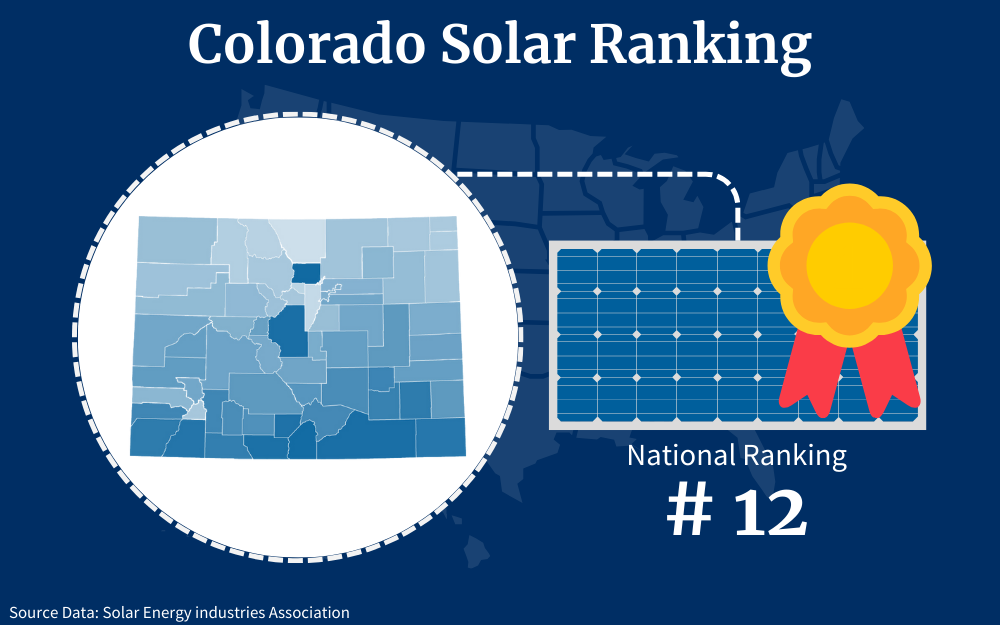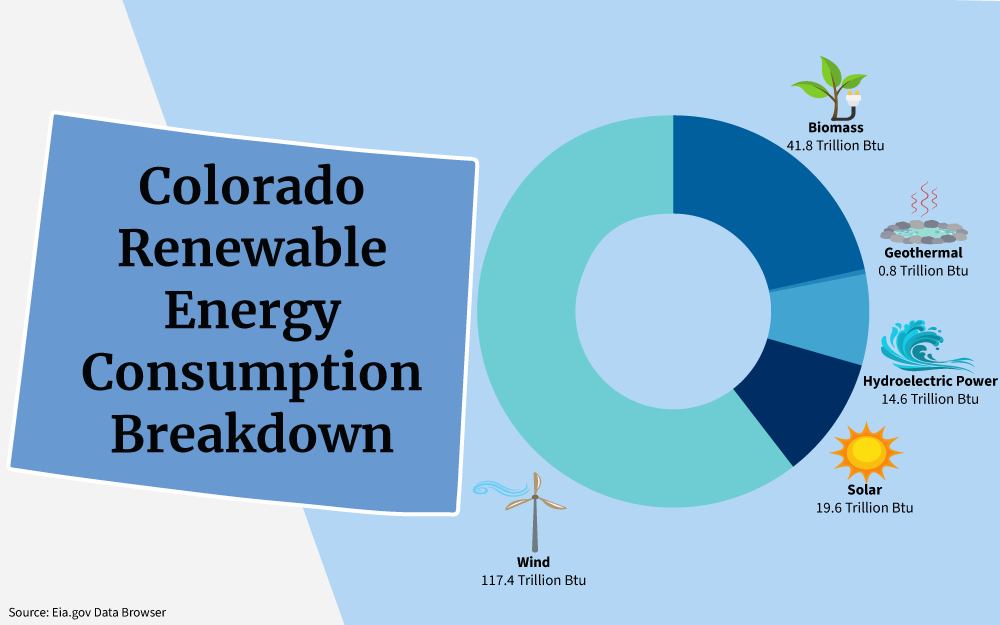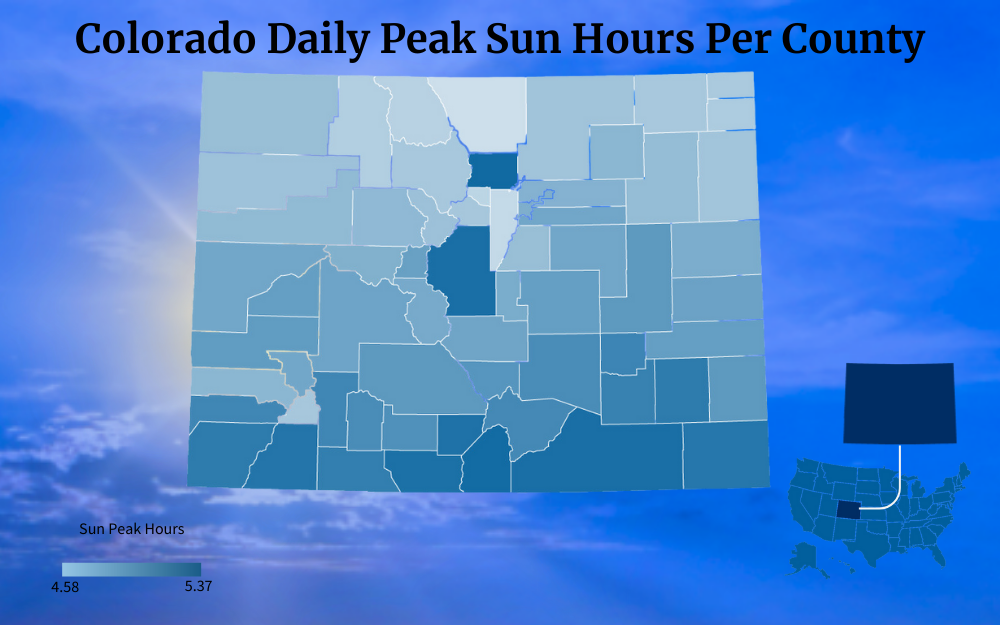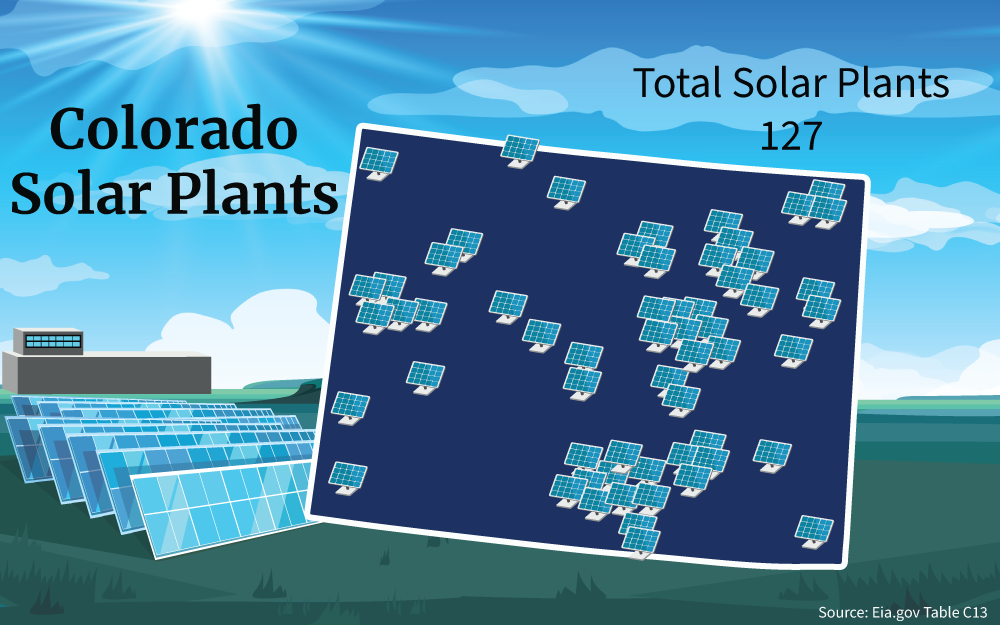Colorado offers residents and businesses clean energy incentives to install solar panels and invest in clean energy vehicles.
In combination with federal tax credits for green energy, the cost of any new equipment installed can qualify.**
TAX INCENTIVE NOTICE*
**Fraud Alert**
US Green Energy
Click Here to Sign Up for Free Solar Panel Installation
| Schedule | Acceptance Date | Last Day To Register |
|---|---|---|
| Q1 | Monday January 1, 2024 | March 30, 2024 |
| Q2 | Monday April 1, 2024 | June 30, 2024 |
| Q3 | Monday July 1, 2024 | September 30, 2024 |
| Q4 | Tuesday October 1, 2024 | December 30, 2024 |
| Q1 (2025) | Wednesday January 1, 2025 | March 30, 2025 |
Energy Smart Colorado
Inflation Reduction Act Tax Credits & Incentives
Xcel Energy
PLEASE NOTE: Beginning in 2025, the federal tax incentives for solar residential installation will be impacted. See the table below for the dates and amounts currently legislated.
**The Federal tax credit is available every year that new equipment is installed.
Colorado State Capitol
Colorado General Assembly
200 E. Colfax Ave.
Denver, CO 80203-1716
Phone: (303) 866-3521
Fax: (303) 866-3855
[email protected]
Hours: M-F 7:30am – 5:00pm
Xcel Energy
1800 Larimer St,
Denver, CO 80202
Residential Customer Service
(800) 895-4999
M-F: 7am – 7pm
Saturday: 9am – 5 pm
Business Solutions Center
(800) 481-4700
M-F: 8am – 5pm
Colorado Energy Office
1600 Broadway, Suite 1960
Denver, CO 80202
(303) 866-2100
[email protected]
M-F: 9am – 5pm
Denver/Boulder Weather Bureau
325 Broadway
Boulder, CO 80305-3328
(303) 494-4221
[email protected]
Hours: Open Daily, 24 hours
Clean Energy and Vehicle Federal Tax Credits
Business Federal Tax Credits
State Tax Credit and Rebate Schedule
| Year | Credit Percentage | Availability |
|---|---|---|
| 2024-2032 | 30% | Individuals who install equipment during the tax year |
| 2033 | 26% | Individuals who install equipment during the tax year |
| 2034 | 22% | Individuals who install equipment during the tax year |
| 2024-2025 | $5,000-$12,000 | Individuals who purchased or leased a motor vehicle or electric or plug-in hybrid electric truck |
| 2026-2028 | will be determined by Legislative Council Staff or the Office of State Planning and Budgeting | Individuals who purchased or leased a motor vehicle or electric or plug-in hybrid electric truck |
| 2024 | $500-$3,000 depending on the heat pump technology | Contractor and customer who purchase and install heat pumps |
| 2026-2029 | will be determined by the Colorado Energy Office | Contractor and customer who purchase and install heat pumps |
| 2024-2032 | Varies, amounts may be project and/or applicant-type specific | Industries within North American Industry Classification System (NAICS) codes 31-33 |
| 2024-2032 | Varies, amounts may be project and/or applicant-type specific | Eligible entities for geothermal energy projects |
If you have determined that you are eligible for the green energy credit, complete Form 5695 and attach to your federal tax return (Form 1040 or Form 1040NR).
IRS Form 5695
Instructions
Future Due Dates and Basics
Office of Energy Efficiency & Renewable Energy
Forrestal Building
1000 Independence Avenue, SW
Washington, DC 20585
RESIDENTIAL CLEAN ENERGY TAX CREDIT
Colorado Clean Energy
Clean Energy Grants and Incentives
Clean Air Program (CAP) Grants
Colorado Solar for All
Weatherization Assistance
Colorado Power Outages Map
Microgrids for Community Resilience Program
Automated Permit Processing for Solar (APPS) Grant
Contact
Colorado Office of Economic Development and International Trade (OEDIT)
Phone: (303) 892-3840
Email: [email protected]
Staff meets by appointment only.
1600 Broadway, Ste. 2500,
Denver, CO 80202
Solar Tax Credit Options for Colorado Residents
Colorado residents, like those in all states, can take advantage of of the Federal Tax Credit for Solar Photovoltaics, but there are many other state and providers rebates and programs that have open enrollment now, which can save you lots of money on your monthly energy costs.
Colorado has obtained a high ranking for state solar implementation and other renewable energy options.
This comprehensive guide explains exactly how you can access and register for solar tax credits and other Colorado solar incentives that reduce dependence on fossil fuels and help you reduce your out of pocket expenses.
Currently, Colorado uses wind, biomass, geothermal, hydroelectric, and solar power to supplement the fossil fuel energy in the state.

In order to increase solar use, a lucrative solar tax credit for residents is available, offered by the U.S. government.7
Using the Federal Tax Credit for Solar Photovoltaics
With the solar tax credit, homeowners can receive 30 percent of the total amount of money that you spent on your home solar installation, as a tax liability credit, or ITC, as it is more popularly known.
It is not really a cashback. Instead, this money is deducted straight from the amount of taxes that you owe for that year.
This incentive has been in effect since the year 2005 and was supposed to expire until the Inflation Reduction Act of 2022 had it extended until the year 2032.8 After that, the rate of the tax credits will start gradually declining, from 30% to 26%, and later to 22%, before fully ending in 2035 (when solar credit expire under this legislation).
You may ask, what are the individual limits on the federal solar tax credit and when do federal credits expire? Is there a maximum amount payable?
More great news: there are absolutely no limits when it comes to how much you are able to get from the incentive, just as long as it is 30% of the installation cost.
There are no caps, and you can even have some of the credits rolled over to the next four more years if your tax liability doesn’t really cater to the amount.
Application Process for Energy Tax Credit
If the solar panel tax credit looks like something that you would be interested in, there is one more thing to know: how to apply for it. Not everyone is able to get it: what matters is that you have to follow the rules, be eligible, and actually learn how to fill in the solar tax credit forms Colorado requires.
At least it helps that it is not such a daunting process and will most likely take just a few minutes.
Step 1: Print Out Federal Solar Tax Credit Form 5695
You may ask, what forms do I need for solar tax credit? You will start off by printing out the IRS Form 5695 from the official IRS website.3
This is probably the first and most important part of the whole application process because it is literally the only way that the IRS can do their review and deem you eligible for the tax credit.
Step 2: Fill In the Documentation
If you were wondering how does the IRS verify solar credit. Here is where you will have to disclose all the information that is required about the solar system.

You will have to follow the Form 5695 instructions from the IRS,13 detailing how massive the setup really is and how much it costs you to get it up and running.
Step 3: Filing
When you are certain that Form 5695 is answered very accurately,9 you are now free to file it together with your taxes. You can always confirm your tax returns to see to it that the tax credit was effected.
Before you even apply for the Colorado solar tax credit in the very few simple steps above, you should know that there are rules to follow, failure to which you may sadly miss out on the incentive.
- The application has to be made after you are done with the entire solar power system installation. Only then will you be able to calculate the total cost to install solar panels and the expected 30% credit.
- The only way that you will be able to receive the credit is if you can prove that you are the actual owner of the system. It must be fully under your custody, and that is why systems under solar leases are not eligible.
- The panels and the equipment are supposed to be brand new, straight from a solar installation Colorado company.
US Dept of Energy Solar Options: Energy Provider Rebates for Solar Power
Colorado understands that one effective way for the solar market to improve is only if residents find solar power more accessible. Here is where the solar incentives in the area come into play.
In addition to the federal solar tax credit, there are also some really great programs at the local level that are being offered either by local utility companies or municipalities.
Xcel Energy Rebate Program
Xcel actually offers one of the most enticing renewable energy programs for its customers.19 Would you believe that there are up to $2,000 up for grabs for each and every kilowatt that you have installed?
What the utility does is offer you about $0.07 for a kWh, and what that basically means is that a 7 kW system will be able to bring in a total of $15,000.
Moreover, there are energy efficient appliance rebates (such as water heaters), rebates for LEDs and smart thermostats as well.
This incentive is however only available for projects like community solar or commercial customers but enrollment is free.
The four step process is outlined on the website,14 making it simple to register for this Colorado solar incentive.
Colorado Springs Rebate Program
This utility provider also offers cash rebates for upgrading to LED,15 energy efficient water heaters and other water conserving products.
And the solar program offers incentives for rooftop installations as long as you are a customer and have at most a 15 kW system.16
There is a $0.10 for every watt up for the taking, and that means that it is about $750. Simply visit the site to enroll.
Black Hills Energy Program
If you are a loyal customer of the Black Hills Energy program,17 you will be able to receive about $0.03 for each and every single kilowatt you can produce, just as long as your system is 20 kW big or less.
Sign up for this rebate using their website.
EnergySmart Colorado
EnergySmart is also offering its customers attractive solar rebate Colorado programs.18
One example is the 25% rebate for solar system installation, capped at $2,500.
Holy Cross Energy Solar Rebates
This energy provider offers a host of solar incentives for customers, including solar rebates for systems that meet the HCE requirements.
These include the Distribution Flexibility program, optional tariff (DFT) and Time of Day optional tariff (TOD).
Customers can receive rebates ranging from $100 per kW solar energy systems, to $500 per kW green energy. To apply for these first-come, first serve Colorado solar incentives, visit the utility company’s website.
San Miguel Power Association (SMPA) Renewable Energy Rebate
This utility provider also offers up to $300 in solar rebates for customers who install a home solar systems.
Town of Erie: Rooftop Solar Rebate
In Erie, residents who install home solar can obtain a $500 rebate.
To qualify and enroll in this cash payment, apply on the website.
Aspen Solar Rebate for Residential
In Aspen, residents can enroll to collect solar rebates, based on specific conditions.
For example, you can only claim the rebate (up to $2250) if the system is produces solar panel electricity for your personal energy use.
In other words, you can’t install a system that is twice what your home normally uses (in the last 3 years) and qualify for the watt-based cash offer.
What Materials and Parts Do You Need for Solar Panel Systems?
A solar module is an elaborate interconnection of cells that are basically what make up the solar panel. Several PV modules are what make up the PV panel that you know.
Besides the solar photovoltaic panels, there are other equally important components without which the system would not even work,6 and you should know about them before the installation.

There are the inverters (string, power optimizers, and microinverters), and what they do is to make the conversion from direct power from the sun to electricity that your household or business can now use.
The charge controller is also there to regularize the power and make sure that it is safe for the system. You will also need a battery system to store the excess power from the panels and, lastly, the racking because the panels don’t just go directly onto the roof.
Given how elaborate the installation seems to be, you can’t help but wonder, what is the cost of solar panels in Colorado? The average cost of installing solar panels in Colorado is about $13,000- $19,000, that is particularly if you have a 5-7 kW system.2
But of course, the solar estimates rate varies based on many factors, and in reality, you may find yourself paying less or sometimes more.
It all depends on a lot of different factors. Here are some of them
- How large your household is or how high its energy needs are
- Quality of the panels that you go for
- Installer
Also, remember that the solar incentives in Colorado may also step in to help reduce the total average cost of installing solar panels.
So, you don’t have to worry about them being expensive. Also, think about the savings that you are going to end up making over the course of the life of your panels; it makes the cost all worth it in the end.
Solar Installation Calculator Costs
A residential solar power calculator is a handy tool that any first-timer should have. Not only do you need software that helps you estimate the cost of solar, but it should also be able to help you calculate the number of panels that you need and how much power will be coming from those panels.
All you have to do is enter the details that the software needs and let it do the rest.

For instance, when using a solar panel calculator by address, you will enter your ZIP code first for the system to make out the average solar panel cost based on where you live.
After that, you will also feed in some specifics like:
- Type of roof
- Form of roof (flat or steep)
- Shading or the amount of sunlight hours a day
- Size of your house in square feet
- Average energy bills
It may look to be asking a lot, but adding these pieces of information will give a more accurate average cost of the solar panel installation for your home.
When it comes to the solar energy estimator or the PV watts calculator, you will go through the same process of entering details about your solar panels, but the only difference is that, in this case, there is more emphasis on just how much power will come from your system. Here is where information like the size of the system, or number of panels, the angle of your roof, and the array type will come in handy.
How To Save on Utilities Costs in Colorado
There are plenty of benefits that come with going solar.10
The minute you detach from the traditional grid and are able to produce your own power from your rooftop panels, you start making savings. The hefty utility bills that you are used to that come every month just stop, and you can focus on the payback period of your panels, after which you can start counting the actual savings that you make over the course of their service.
You can even enroll for net metering in Colorado to help further reduce the amount that you pay for receiving power from the grid. It’s like you are selling the power and the credits are the payments that step in to offset the utility costs.

Maybe the only problem that stands in the way is the upfront cost of installing solar panels in Colorado. .
The concept of free solar panels in Colorado or Colorado no-cost solar program is quite tricky because there are currently no such programs. That is unless you are talking about solar leases or Power Purchase Agreements, and none of them is a Colorado free solar program.
In these contracts, you allow an installer to set up the system for you at very little or no cost, and in exchange, you have to pay a small solar bill at the end of every month.5 It has seemed to work for so many people so far, especially low-income households.
Using Photovoltaic Cells in Colorado for the Solar Grid
If you have weighed all your options and are certain that going solar would be the best thing for your home, the next stop is now finding the right company or installer for the system.
Remember that this project may actually be one of the most crucial and even the most pricey that you will ever carry out for your home, and that is why you have to be very careful when choosing who will get the job done.
- Take your time to research which companies are operating in Colorado, and particularly in your city first. That kind of helps you narrow it down only to the ones in your area.
- With a full list, it now becomes easier to check the company reviews and ask around to get more details about how they work, their level of professionalism, and any other information that you may need. And with that, the list starts getting shorter and shorter.
- When you are certain of the top few companies that you would really like to work with, you can now start comparing the rates. With that, you will be certain that you are getting the best of both worlds, a top company that has also got the most competitive prices.
How Long Will Solar Panels Last in Colorado?
So, before you buy the panels, you should know how long will solar panels last in Colorado. This will be a clear indication of the solar panels’ sustainability and will also be quite instrumental in helping you calculate the total amount of savings that you are going to make over the course of their life.11
It is a good thing that the life expectancy of solar panels in Colorado stands at 25 to 30 years, although there are also exceptional cases where the equipment can go up to 40 years.
Given that the panels usually lose about a percentage of their efficiency in a single year, it basically means that even after the 25 years have gone, they will still be at 85% efficiency.4
Solar Power in Colorado: Current Solar Farms
Photovoltaic solar energy in Colorado has been a massive success, particularly in the last decade. The SEIA states that the cost of solar panels in Colorado has dropped a historic 43% so far, and the state is not doing too bad either when it comes to solar market ranking.12
Did you know that Colorado is number 13 on the list of the best states to go solar?1 That is a huge deal if you ask.
Just imagine harnessing power from a resource that is completely free of charge and turning it into energy that can power up your entire home. That is exactly what solar panels do.
One more thing that makes Colorado stand out from other states is the fact that it has abundant sunshine. With an average of 300 sunny days out of the entire year, you can limit how much storage you need to purchase.
Keep in mind that knowing when federal credits expire for government solar programs can make a big difference in the cost of home solar power.
Using Colorado solar incentives to reduce your energy costs is easy, and knowing where to enroll in rebates and tax credits can help mitigate the upfront installation costs so you can take advantage of them now.
Frequently Asked Questions About Colorado Solar Incentives
How Long Do Solar Panels Last in Colorado?
Solar panels in Colorado have a long service life, which is more than enough time for you to make full use of them and make a lot of savings in the process. Imagine receiving power at no extra cost from this equipment for as long as 25-30 years (the average lifespan of solar panels); of course, it still depends on the quality of your system’s manufacturer and how you take care of the parts over the years.
Does Colorado Have a Statewide Solar Tax Credit?
While Colorado, like other states, boasts of the federal solar tax credit, other credits and rebates are localized from specific utility providers.
Are Solar Panels Worth It in Colorado?
Definitely! The money you spend on a home solar system in Colorado can be returned in the form of lower energy bills, usually within a 10-year period.
References
1David, L. (2023, August 19). Colorado Solar Tax Credits, Incentives and Rebates (2023). MarketWatch. Retrieved August 25, 2023, from <https://www.marketwatch.com/guides/home-improvement/Colorado-solar-incentives/>
2McGargill, V. (2023, May 10). The Cost of Solar Panels in Colorado – [Updated 2023 ]. EcoGen America. Retrieved August 25, 2023, from <https://ecogenamerica.com/cost-of-solar-panels-Colorado/>
3Simms, D. (2023, August 7). Colorado Solar Incentives (Rebates, Tax Credits & More in 2023). EcoWatch. Retrieved August 25, 2023, from <https://www.ecowatch.com/solar/incentives/co>
4Apollo Energy. (2023, March 27). Solar Answers: How Long Do Solar Panels Last in Colorado? Apollo Energy. Retrieved August 25, 2023, from <https://www.harnessoursun.com/post/solar-answers-how-long-do-solar-panels-last>
5Weigand, J. (2023, May 15). How To Get Free Solar Panels In Colorado | Updated 2023. EcoGen America. Retrieved August 25, 2023, from <https://ecogenamerica.com/free-solar-panels-Colorado/>
6National Renewable Energy Laboratory. (1997, March). Photovoltaics: Basic Design Principles and Components. National Renewable Energy Laboratory. Retrieved September 1, 2023, from <https://www.nrel.gov/docs/legosti/fy97/6981.pdf>
7Solar Energy Technologies Office. (2023, March). Homeowner’s Guide to the Federal Tax Credit for Solar Photovoltaics. Energy Efficiency & Renewable Energy. Retrieved September 1, 2023, from <https://www.energy.gov/eere/solar/homeowners-guide-federal-tax-credit-solar-photovoltaics>
8Wikipedia. (2023, August 31). Inflation Reduction Act. Wikipedia. Retrieved September 1, 2023, from <https://en.wikipedia.org/wiki/Inflation_Reduction_Act>
9Department of the Treasury Internal Revenue Service. (2022). 2022 Instructions for Form 5695. Department of the Treasury Internal Revenue Service. Retrieved September 1, 2023, from <https://www.irs.gov/pub/irs-pdf/i5695.pdf>
10Energy Saver. (2023, February 13). 5 Benefits of Residential Solar. Energy Saver. Retrieved September 1, 2023, from <https://www.energy.gov/energysaver/articles/5-benefits-residential-solar>
11Solar Energy Technologies Office. (2023). End-of-Life Management for Solar Photovoltaics. Energy Efficiency & Renewable Energy. Retrieved September 1, 2023, from <https://www.energy.gov/eere/solar/end-life-management-solar-photovoltaics>
12Solar Energy Industries Association. (2023). Colorado Solar. SEIA. Retrieved September 10, 2023, from <https://www.seia.org/state-solar-policy/colorado-solar>
13Internal Revenue Service. (2022). 2022 Instructions for Form 5695. IRS. Retrieved September 13, 2023, from <https://www.irs.gov/pub/irs-pdf/i5695.pdf>
14Xcel Energy Inc. (2023). Select a Service Area to Explore. Xcel Energy. Retrieved September 13, 2023, from <https://co.my.xcelenergy.com/s/state-selector?return=%2Fs%2Frenewable%2Fsolar-rewards>
15Colorado Springs Utilities. (2023). Residential Rebates & Incentives. Colorado Springs Utilities. Retrieved September 13, 2023, from <https://www.csu.org/Pages/ResidentialRebates.aspx?gclid=CjwKCAjwu4WoBhBkEiwAojNdXk0T-T3vJdF81uTgvQtQO-n2vA04fgEpHy8qLU0Y8Els32Y0J9I02BoCSJkQAvD_BwE>
16Colorado Springs Utilities. (2023). Solar Energy Program. Colorado Springs Utilities. Retrieved September 13, 2023, from <https://www.csu.org/Pages/SolarProgram.aspx>
17Black Hills Energy. (2023). Assistance Program. Black Hills Energy. Retrieved September 13, 2023, from <https://www.blackhillsenergy.com/billing-and-payments/assistance-programs>
18Energy Smart Colorado. (2023). Energy Saving Rebates. Energy Smart Colorado. Retrieved September 13, 2023, from <https://energysmartcolorado.org/rebates-for-your-home/>
19Xcel Energy Inc. (2021). Energy Solutions for Your Home or Business. Xcel Energy. Retrieved September 15, 2023, from <https://www.xcelenergy.com/programs_and_rebates>
20Screenshot of IRS Instructions for Form 5695. Internal Revenue Service. Retrieved from <https://www.irs.gov/pub/irs-pdf/i5695.pdf>
